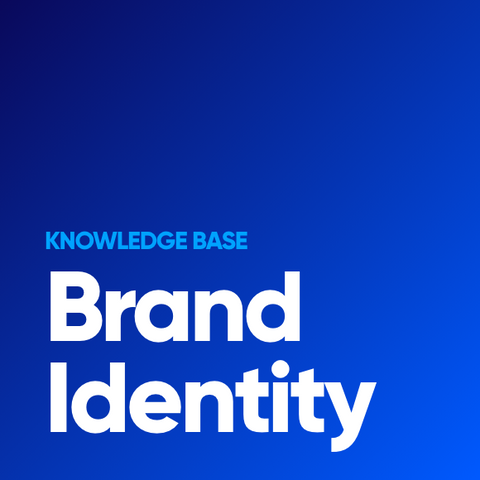Brand Identity Unveiled: The Visual Essence of a Brand
At its core, it is the visual representation of a brand, encapsulating its essence, values, and personality. Brand Identity is more than just a logo or color scheme; it's a powerful tool that fosters recognition, trust, and loyalty. In this in-depth exploration, we will delve into the world of Brand Identity, unveiling its pivotal role, deciphering its applications, and understanding its profound impact on business and marketing.
The Essence of Brand Identity
Brand Identity serves as the face of a company or organization. It encompasses all the visual elements that communicate the brand's personality, values, and promise. The essence of Brand Identity lies in its ability to create a cohesive and memorable representation, establishing a connection with the target audience that goes beyond words.
Significance of Brand Identity
The significance of Brand Identity cannot be overstated. It serves as the foundation for brand recognition and differentiation. Here's why it's crucial:
-
Recognition and Familiarity: A robust Brand Identity makes a brand instantly recognizable, facilitating consumer recall and building familiarity.
-
Trust and Credibility: A consistent and well-crafted identity fosters trust and credibility among consumers, making them more likely to choose a brand.
-
Differentiation: Brand Identity sets a brand apart from its competitors in a crowded marketplace, highlighting what makes it unique.
-
Brand Loyalty: A compelling Brand Identity can elicit emotions and build brand loyalty, turning customers into lifelong advocates.
-
Visual Communication: It simplifies the complex process of conveying a brand's values, mission, and offerings through visual elements.
Elements of Brand Identity
Brand Identity comprises several key elements that work in harmony to create a cohesive representation:
-
Logo: The logo is the centerpiece of Brand Identity. It is a visual symbol representing the brand and is often the first thing consumers associate with it.
-
Color Palette: A specific set of colors represents the brand. These colors evoke emotions and contribute to the brand's personality.
-
Typography: The choice of fonts and typography style is essential in maintaining consistency across all brand materials.
-
Visual Style: This includes elements such as imagery, graphics, and iconography, all of which contribute to the brand's visual language.
-
Voice and Messaging: The tone and style of communication play a significant role in Brand Identity. The choice of words, slogans, and messaging should align with the brand's personality.
Applications of Brand Identity
Brand Identity is not limited to a single industry; it finds applications across diverse fields, including:
-
Corporate Branding: Large corporations establish a comprehensive Brand Identity to maintain a consistent image across various divisions and subsidiaries.
-
Small Businesses: Businesses utilize Brand Identity to create a professional and recognizable image, helping them compete in the market.
-
Nonprofits: Nonprofit organizations rely on Brand Identity to convey their mission, connect with donors, and foster trust among supporters.
-
E-commerce: E-commerce brands leverage Brand Identity to build trust, encourage repeat purchases, and convey a cohesive brand image online.
-
Hospitality: Hotels, restaurants, and travel companies use Brand Identity to create unique and memorable guest experiences.
Crafting an Effective Brand Identity
To create a compelling Brand Identity, consider these strategies:
-
Understand Your Audience: Know your target audience's preferences, values, and expectations to tailor your Brand Identity effectively.
-
Consistency is Key: Maintaining consistency across all brand materials ensures that every visual element aligns with the brand's identity.
-
Emotionally Connect: Develop a Brand Identity that elicits emotions and connects with your audience personally.
-
Adapt to Change: While consistency is vital, a Brand Identity should also be adaptable to changes and growth within the organization.
-
Seek Professional Help: Consider enlisting the expertise of branding professionals who can help create a robust Brand Identity.
Impact and Significance of Brand Identity
The impact of a well-crafted Brand Identity is profound:
-
Recognition and Recall: A robust Brand Identity fosters instant recognition and recall, making it easier for consumers to choose a brand among many options.
-
Consumer Trust: Trust is built through consistent and credible Brand Identity. Consumers are more likely to trust and engage with a brand that maintains a professional image.
-
Differentiation: Brand Identity sets a brand apart from competitors, highlighting its unique qualities and offerings.
-
Loyalty and Advocacy: Compelling Brand Identity can cultivate customer loyalty, turning them into advocates who recommend and support the brand.
-
Simplified Communication: Brand Identity simplifies the communication of a brand's values and mission, enabling a deeper connection with consumers.
Brand Identity in Diverse Industries
Brand Identity transcends industries:
-
Technology: Tech giants like Apple and Google have robust and recognizable Brand Identities that convey innovation and accessibility.
-
Automotive: Automotive brands like Mercedes-Benz and BMW use Brand Identity to represent luxury, performance, and innovation.
-
Fashion: Fashion houses like Chanel and Louis Vuitton have iconic Brand Identities that signify elegance and exclusivity.
-
Food and Beverage: Brands like Coca-Cola and Starbucks utilize Brand Identity to convey consistency and global recognition.
-
Entertainment: Entertainment companies like Disney and Netflix employ Brand Identity to create immersive and memorable experiences.
The Future of Brand Identity
As the world of marketing and design evolves, the future of Brand Identity holds exciting possibilities:
-
Digital Transformation: Brand Identity will adapt to the digital landscape, ensuring a seamless and consistent brand experience across various online platforms.
-
Personalization: Brand Identity may become more personalized, with brands tailoring their image to individual consumer preferences.
-
Sustainability: Ethical and sustainable practices will influence Brand Identity, emphasizing environmentally friendly elements.
The Visual Heartbeat of a Brand
Brand Identity is not merely a logo or color scheme; it is the visual heartbeat of a brand. It is the face, the personality, and the promise that a brand extends to the world. Brand Identity is the key to recognition, trust, and loyalty, forming a bridge between businesses and consumers. It goes beyond design; it's about making a lasting impression and building meaningful connections. In the ever-evolving landscape of business and marketing, Brand Identity stands as the enduring symbol that represents a brand's core values, vision, and identity.

Brand Identity
Then, pick one of these:

Brand Identity Design

Logo Design






